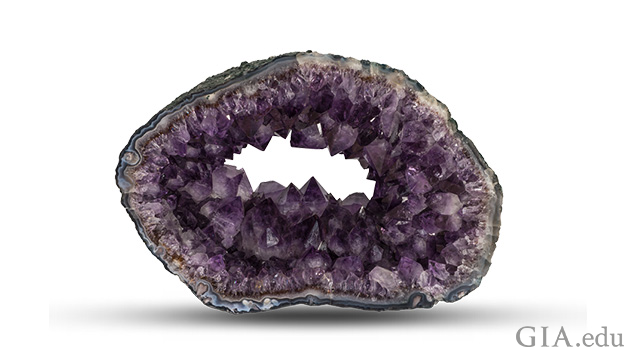Riches in the Rocks

Photo: ,
Photo: Orasa Weldon/GIA
Quartz variety Amethyst, Brazil
Exhibit Description
The GIA Museum introduces visitors and students to the vast and vibrant world of gems and jewelry. Exhibits throughout the campus showcase the science and beauty of these objects we hold precious. Supporting the exhibits is the GIA Collection, which contains a wealth of specimens and objects that highlight the products of the earth’s geologic processes, and the expertise of artisans and designers.
Gemstones are beautiful, rare and durable. Throughout human history, they have been coveted as symbols of power and love. Wars have been won and lost in their pursuit. For many, they have magical powers to heal, bring wisdom and ensure prosperity. They can take your breath away.
Gem minerals crystallize from magma deep in the earth’s crust, or in hot solutions moving through rock. Those that grow under the best geologic conditions will form magnificent crystals, often colorful and transparent, that are cut into the gemstones we admire in jewelry.
To reach these special crystals, miners oftentimes tunnel deeply through extraordinarily hard rock. Erosion may move the crystals from their primary source to another location, such as downstream in a riverbed, where they are found mixed with sand and gravel. Nothing compares to the excitement of seeing that first crystal in a cave of crystals, or that first bright pebble in a stream.
In this gallery, we explore the origins of gem minerals from several key gem-producing areas. Welcome to our world.



